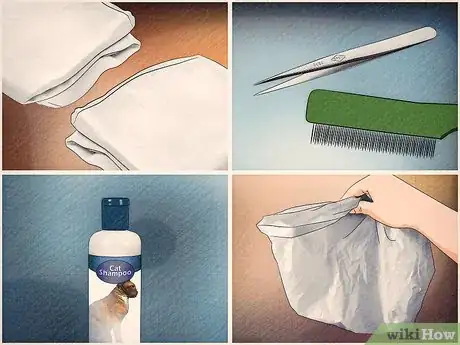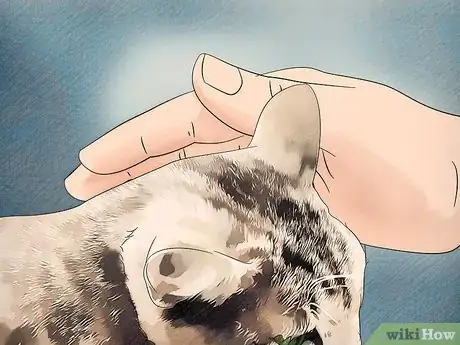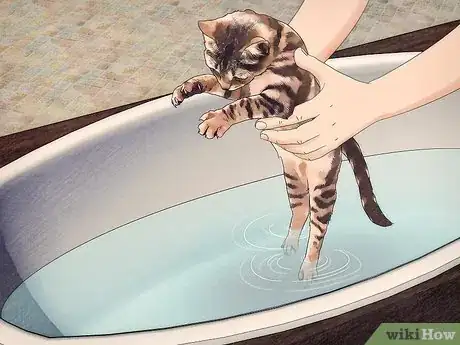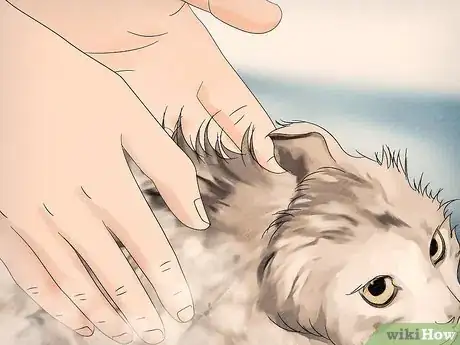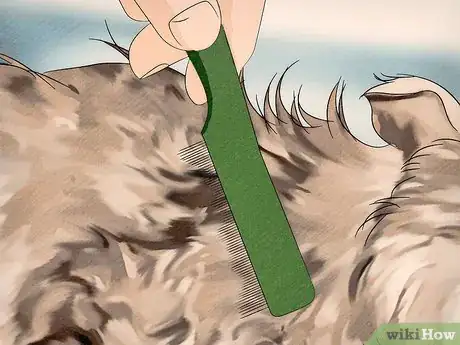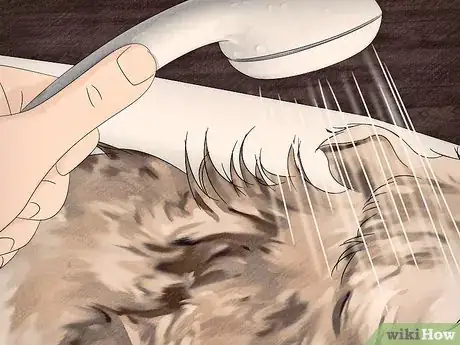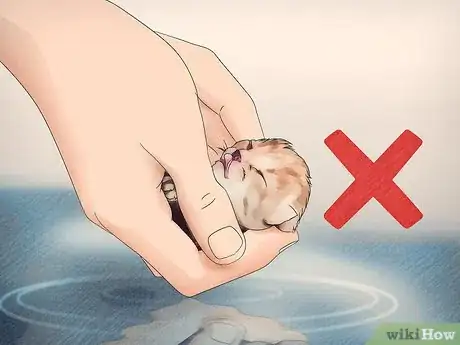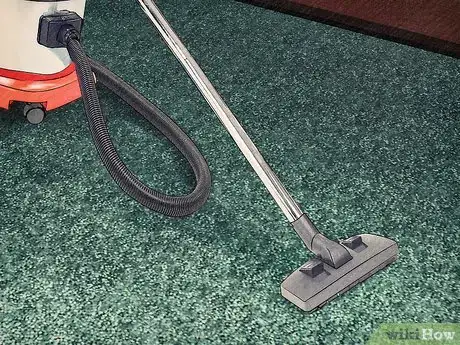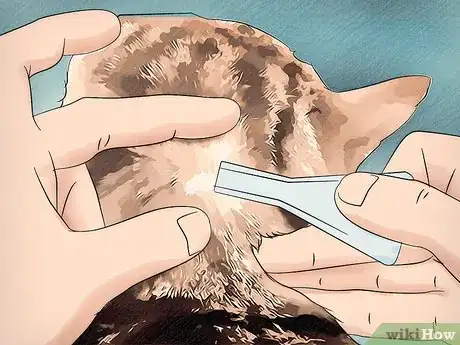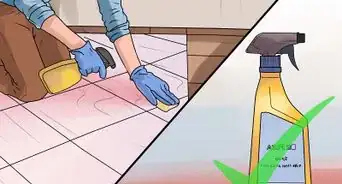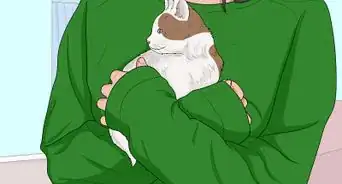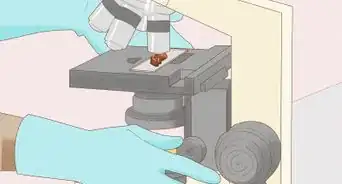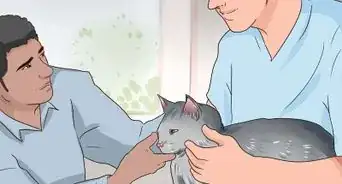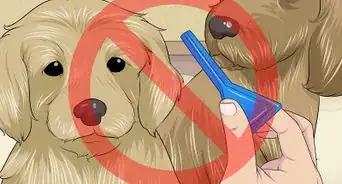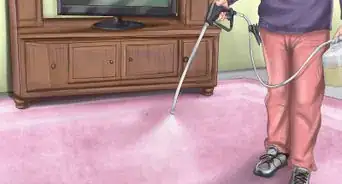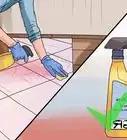This article was co-authored by Pippa Elliott, MRCVS. Dr. Elliott, BVMS, MRCVS is a veterinarian with over 30 years of experience in veterinary surgery and companion animal practice. She graduated from the University of Glasgow in 1987 with a degree in veterinary medicine and surgery. She has worked at the same animal clinic in her hometown for over 20 years.
This article has been viewed 248,457 times.
An essential part of owning a cat is to regularly de-flea it. If your kittens have come into contact with fleas, you can remove some fleas with a bath. You can use regular cat shampoo and then remove the fleas manually. You should follow up with your vet about other types of treatment. You're unlikely to get rid of every flea with a bath. Never shampoo newborn kittens for fleas. You can remove any fleas you see on them manually.
Steps
Making a Comfortable Bath
-
1Gather your supplies. Make sure you have all your supplies ready before giving your kitten a flea bath. You do not need special flea shampoo. In fact, flea shampoo may not be good for a young kitten's skin. You will need the following to shampoo your kitten for fleas:[1]
- Two towels.
- Tweezers or a flea comb.
- A mild cat shampoo.
- A plastic bag or a garbage bag.
-
2Set up the bathing area. Lay down all your supplies near the sink, tub, or container where you're bathing your kitten. As kittens are small, you can probably use a large mixing bowl or something similar rather than a sink or tub.[2]
- Choose a quiet location where you can close the door.
- Keep some treats on hand to reward your kitten for behaving in the bath.
- Fill the tub, sink, or bowl with warm water. Make sure the water is cool enough that you can comfortably touch it with your bare hand.
Advertisement -
3Prepare your kitten for the bath. Get your kitten used to your touch before the bath. Gently pat the kitten all over its body. Rub behind your kitten's ears, on its head, and sensitive areas like the paws and belly. This will prepare your kitten for your touch during the shampooing.[3]
-
4Get the kitten's feet wet first. Dunking your kitten in the water may be traumatic. To keep your kitten calm, dunk its feet in the water first. Praise your kitten and talk to it in a soothing voice to keep it calm. Wait until your kitten is used to having its feet wet before proceeding.[4]
Shampooing Your Kitten
-
1Immerse your kitten in the water. For a flea bath, you want to quickly dunk your kitten in the water. You will immerse your kitten up to the neck in the bowl, sink, or bath full of water.[5]
- You do not need to hold your kitten in the water for long. You only need to make sure all its fur is wet. This should only take a few seconds.
-
2Apply the cat shampoo. Squirt a small amount of cat shampoo on your kitten's back. Gently lather its fur in the cat shampoo, making sure to remember hard-to-reach and sensitive areas such as the stomach, legs, and paws.[6]
- Apply the cat shampoo in gentle, massaging motions. Be very careful not to get the cat shampoo in your kitten's eyes.
- You may see fleas run to your kitten's head, as they go for the driest area. If you're able, pick the fleas off as you see them moving. Drop them in a cup of hot water to kill them.
-
3Remove any fleas you see manually. Take your tweezers or flea comb and use them to work through your kitten's fur. Remove any fleas you see manually. Put them in a cup of hot, soapy water to kill them.[7]
-
4Rinse your kitten. Submerge your kitten in the water again up to its neck. This will rinse off the cat shampoo. Make sure you don't see any soap residue when you remove your kitten from the water. If you see any lingering soap, dip your kitten in the water again.[8]
- Dry your kitten off with a warm towel after its bath. Give it some treats to reward it for cooperating during a stressful experience.
-
5Pick off any remaining fleas. You may see some fleas lingering on your kitten after its bath. Take your tweezers and go over your kitten once more. Remove any fleas you see still on your kitten.[9]
Avoiding Pitfalls
-
1Do not bathe newborn kittens. Remove fleas manually from newborn kittens with a pair of tweezers. Their fur is thin enough that you should be able to easily spot and remove fleas. It's not safe to bathe newborn kittens.[10]
- Never use over-the-counter flea medication on newborn kittens.
-
2Make sure to eliminate fleas in other areas. Fleas do not just live on pets. Fleas can live in your carpeting, furniture, and bedding. You will have to thoroughly clean your home to fully eliminate a flea infestation.[11]
- Wash all your kitten's toys and bedding in warm water.
- Steam clean furniture.
- Sweep and vacuum frequently.
-
3Use a medication to follow up with flea treatment. A flea bath will not effectively get rid of all your cat's fleas. Flea control and management requires multiple approaches. Talk to your vet about a safe flea medication to use on your kitten. Flea medications can help kill any new fleas that get on your kitten after its flea bath.[12]
- Do not medicate your kitten without consulting a vet. Many flea medications have minimum weight requirements for safety.
Warnings
- If in doubt, call your local veterinarian to find out which shampoos are appropriate for a kitten and the optimal way to use them.⧼thumbs_response⧽
- If your kitten shows sudden signs of irritation in its eyes or ears, rinse area with water and quickly dry, to not scare and hurt it badly.⧼thumbs_response⧽
References
- ↑ http://www.petful.com/pet-health/flea-medicine-for-kittens/
- ↑ http://www.petmd.com/cat/centers/kitten/grooming/evr_ct_how_to_give_kitty_bath
- ↑ http://www.petmd.com/cat/centers/kitten/grooming/evr_ct_how_to_give_kitty_bath
- ↑ http://www.petmd.com/cat/centers/kitten/grooming/evr_ct_how_to_give_kitty_bath
- ↑ http://www.petful.com/pet-health/flea-medicine-for-kittens/
- ↑ http://www.petful.com/pet-health/flea-medicine-for-kittens/
- ↑ http://www.petful.com/pet-health/flea-medicine-for-kittens/
- ↑ http://www.petful.com/pet-health/flea-medicine-for-kittens/
- ↑ http://www.petful.com/pet-health/flea-medicine-for-kittens/
